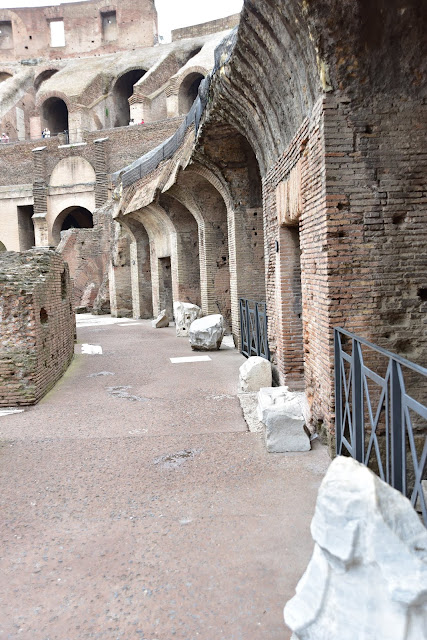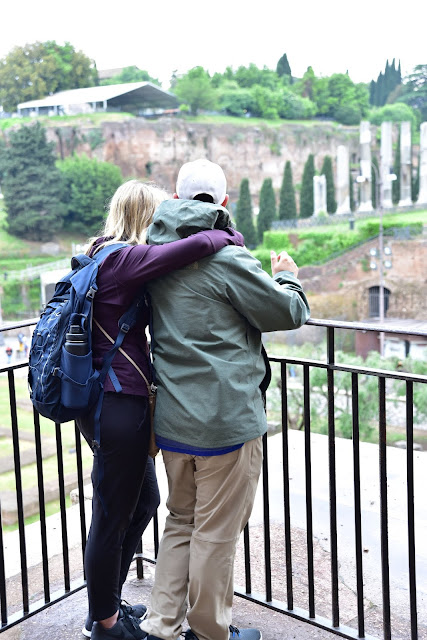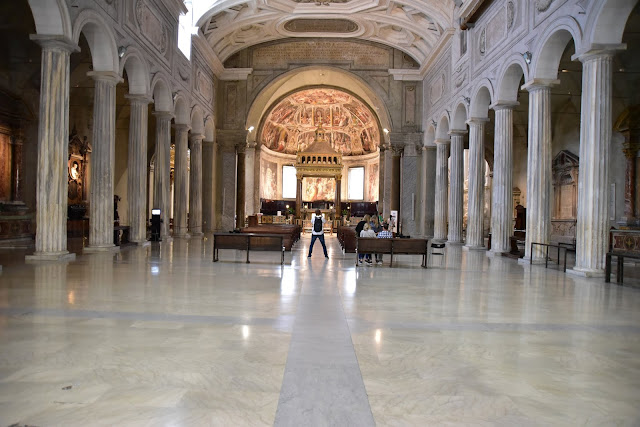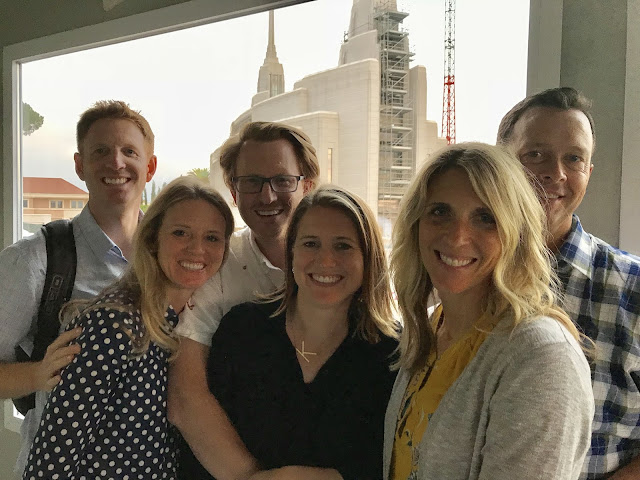Our trip to Italy finally arrived! Brady and I both listed Italy as our top European must-see when we got married. When we discussed places to go, it was not really on the radar. We threw around Norway, New Zealand/Australia, and backpacking in California. In the end, though, we jumped on tickets that were "cheap" to Rome. (Sadly, three weeks later, they were half what we paid from LA to Rome for trips from KAUAI to Rome. Burn!) Cory and Kristen sacrificed travel time and money to come despite a sabbatical leave to Europe for six weeks in the summer, and an insane school and home-remodel schedule. Paul and Angela jumped in, too, and we were thrilled to have travel buddies for our globe-trotting.
Flights from Kauai are arduous all by themselves, but add in another 12 hour flight and it is clear why we originally decided Europe was out while we lived in Hawaii. Now that Hawaii is more permanent, though, we decided long travel time was not going to stop us, and the truth is that flights are so easy without kids. The best part of the flight to Rome was when Kristen popped 2 Tylenol PMs, only to discover that they were regular Advil. Dangit! Brady and I slept about one hour each, and watched other passengers snore with jealousy.
We hurried off the plane to stand in this customs line for two hours. It was hot and people were crabby, but it conditioned us for standing in line and the large crowds we faced most of the trip. Nothing was ever as bad as this line (and nearly passing out in it).
Brady and I liked our Rome accommodations the best of all the fancy, beautiful places we stayed. In the heart of the city--nearly spitting distance of the Pantheon--we met with the local owner and enjoyed his tour of the home, which boasted antique furniture, trendy bedroom decor, unique tile work, artwork, a lift, and with a semicircular, aged door that appeared to be on original hinges and with a key straight from the 18th century. It opened directly onto the cobble streets of Rome and screamed charm and authenticity.
We missed several hours of the itinerary with the delayed flight and nightmare at customs, but we hurried to purchase the pass that would get us to the Colosseum. The ticket counter told us there was no way we could make it before close but we ran to the entry and were the last ones to get in (they even tried to close the gate on Brady). Lucky!
The Colosseum is barbaric and fascinating. Built by slaves 2,000 years ago, it invites the imagination to reenact the games--bloody battles of animals against animals, animals against criminals and POWs, and most famously, animals and humans against gladiators. We could see the underground passageways where the fighters were kept, and the areas animals would spring onto the stage. Death for entertainment clashes hard against our cultural bias and ethics. These games did help the Romans understand the conquests of distant lands and peoples and make them more real by portraying them on a deadly stage.
The stage (no longer present) was wooden and covered with sand for the games.
The stadium held 50,000 people and could empty as quickly as a modern arena. The word "vomit" comes from the word "vomitorium," which was the passageway leading to the seats which would spill out into the street after the games.
No sleep, but riding high on the adrenaline we worked up sprinting here.
The Arch of Constantine commemorates Rome's acceptance of Christianity after Emperor Constantine's defeat of Maxentius. Constantine's 313 A.D. Edict of Milan ordered Romans to stop persecuting Christians, and the reasons for his acceptance of Christianity vary from visions of the cross in the sky to his belief it would win him the battle. He declared tolerance with Christianity and paganism.
The arch is the largest triumphal arch in Rome and on the path taken by victorious emperors into the city.
This giant statue is of Constantine and was in the Roman Forum until the decision to preserve it at the Capitoline museums.
The amphitheater was originally white with a colorful, brilliant trim. That is hard to imagine after all the pictures in textbooks I've seen of it looking as it is now.
We captured views of the Roman Forum rather than touring the inside (no amount of running was getting us through those closed gates), then walked on the cobblestone streets to dinner. The only regrets I have for Rome were missing the tour of the Forum and not getting tickets early enough for the Borghese Gallery.

Paul was the winner of our first Italian feast, and not just because he caught some zzzs. His carbonara was a dish we chased again and again during the trip and never found one that quite lived up to the first night. This restaurant was a favorite for all of us.
Cities are best explored in the early am or the evening. We fueled up on our first taste of Italian gelato from Venchi, then wandered. After sleepy Hawaiian nights that start at 7pm, it is alarming to see so many people out and about close to midnight. The most notable part of the night was at 2am, when we woke up to hear a homeless, strung out man screaming outside our window. Angela dreamed all night that he found a way inside. (I'll venture a guess that the Rome accommodations were not Angela's favorite.)
The next morning, we walked to see St. Peter-in-Chains Church, the 5th century church built to safeguard the relic of the chains that held St. Peter. We wondered at the charm of alleys and staircases on the way.
This relic is kept under the main alter of the basilica. When the Apostle Peter was preaching about Jesus in Jerusalem, he was said to be shackled in these chains. Frescos on the ceiling depict the miracle of his release from the chains by an angel and led out of his prison. According to legend, when Pope Leo I compared these chains to the chains holding him in another Roman prison, the two miraculously fused together. I realize that genuine relics like this are unlikely authentic but I appreciate the solemnity and cultural significance of them.
Just as notable, Michaelangelo's Moses is also housed in this basilica. It was commissioned along with Slaves and 40 other sculptures for the tomb of Pope Julius II, which was never completed. In this work, Moses has the Ten Commandments and is ready to stop the his people from idol worship. He has horns, which resulted from a translation of the Latin scripture from "rays" to "horns," and Moses is frequently depicted with horns in work up to the 16th century. They are in no way associated with the devil. I love Moses' left arm--muscular and ready for action--contrasted with the folds of blanket gently moving on his lap.
This is the funniest picture of our trip.
The crowds lining up for the free entry first Sunday of the month to the Colosseum and Roman Forum.
Next up, the Capitoline museums, where we were inundated with more ancient statues than we ever needed to see.
Boy with Thorn, a Greco-Roman Hellenistic bronze that was one of the few never lost, was my favorite in the museum.
Marcus Aurelius was spared by Christians in their rampage and destruction of pagan art because they thought his arm was raised in a blessing and confused him with Constantine.
We took the "Elevator to the Sky" at the Victor Emmanuel Monument, a huge structure celebrating the unification of Italy in 1861. The elevator offered us views of Rome, and we spent time deciphering areas of the Roman Forum and learning about the Vestal Virgins, the women who served 30-year terms with the sacred dirty to make sure the hearth fire never went out. Retrospectively, if I had to choose, I would spend time at the Forum seeing first hand the ruins of halls of justice, palaces, and the main square over the Colosseum.
We stopped for a quick, 180-minute lunch in Trastevere, considered the sketchier part of Rome.
The best part of the day was our time spent touring the Jewish Ghetto. "My good friend, Rick's" audio tour was concise, informative, and charming. We learned that Rome's first Jews were welcomed, but as Christianity was accepted, persecution began. In 1555, the Pope decreed that the Jews would be contained in a walled-in, tiny, often-flooded and undesirable region.Interestingly, "ghetto" is Italian, originating from a word meaning "to cast."
My two favorite details of the walk included hearing about Nazis showing up in 1943 and threatening to deport Jews to concentration camps unless they were given 110 pounds in 24 hours. Everyone including non-Jews contributed and paid the ransom. The Nazis took the gold and the Jews in the end, but knowing the generosity of the community toward the Jews filled my heart.
Below is the Portico d'Ottavia, the gateway to the community built in 27 B.C. ages before it was the Jewish Ghetto.
Locals claim that appartment number 25 is from a poor, elderly woman who refused to give up her property and now reportedly owns part of the ancient arch.
My second favorite discovery was from Bernini, who was reputed to respect the Jews and created a this mannerist fountain with turtles, symbolizing a creature who carries all its belongings.
Balloon vomit:
We spent the afternoon doing the "Heart of Rome" walk, and witnessing the architecture, chaos, commotion, and energy of the city.
Rome is not particularly clean--the buildings look like they need powerwashing and finding a trash can is a chore.
The 2,000 year old Pantheon is a Roman temple dedicated to all the gods. The dome was heavily influential and guided Brunelleschi's design of the Florence dome more than a century later. The bronze doors are 23' tall, the 30' wide oculus is wide open, most of the floor is original. It holds tombs but I cannot mention much from memory because staying awake while listening to the highlights proved impossible for me.

I anticipated charm and some crowds at the Trevi fountain, but I ended up throwing my coin over my left shoulder over the heads of three-deep tourist groups. When in Rome...shrug.
Finally, we took an Uber to the war zone of the Rome temple, enjoying our conversation with an Italian local on the way, and snapping a few shots through the windows to prove we were there. I'm glad we did this so that I have a clear conscience to the rest of the group who wanted to see it. The best pictures we got were in the visitor's center through the TV screen depicting images. Ha!
We saved the best for last, visiting the Spanish steps close to midnight. We ran up the stairs, took pictures with roses, and admired the nighttime views of the city.
Before heading home, we stopped over at the Trevi fountain to see if it had cleared out. This was the crowd at midnight.
We made it back to our AirB&B with breathless anticipation for the next day's itinerary--Vatican City. The morning came early and we packed our bags and headed out the door, all too aware that these were our last hours in Rome.
Vatican City is it's own miniature country, and could fit 8 times within New York's Central Park. The lines getting in were intense and made us glad for advanced planning and tickets.
We met with Sara, our tour guide who was born and raised in Rome and with a degree in Art History and PhD in Archeology. She found a niche to instruct us on the art we would see for almost an hour with her iPad. We were all getting antsy to get inside and explore, but when we met with the crowds, we quickly understood her reasoning for teaching us before the chaos. Up to 37,000 people visit the museums in their limited hours and it is a pressure cooker of humanity walking through the halls.
We passed through Pine Cone Square--a symbol of eternal life.
This piece inspired the creation image Michaelangelo painted in the Sistine Chapel. It is a pagan God with an idealized body.
Laocoon, an original sculpture and figure of Greek and Roman mythology, was found with all but his arm. In 1905, the original arm was luckily discovered in an antiques shop and restored to the its owner.
I loved the tapestry and map rooms of the museum. This is a surfing Jesus, and as you rotate around the image, His eyes follow you and the "surfboard" appears 3D. The maps were vivid and showed Italy prior to unification.
We insisted on the seeing the Raphael Rooms. Raphael painted at the same time as Michaelangelo but died young at 37. His rooms portray a political message to visitors--the Pope has authority from the Emperor and from God.
The School of Athens, honoring Aristotle, Plato, and artists from Raphael's time such as da Vinchi and Michaelangelo. Philosophers on up the steps, and scientists down below. Sara emphasized that this painting and the one across from it worked together to demonstrate that reasoning and logic should be used to approach the mysteries of God. You need God's light to understand.
The Deliverance of St. Peter.
The Sistine Chapel--stunning but teeming with people. We expected silence and reverence but it was so jam-packed and stealing away to the side so we could spend 20 minutes gazing at the ceiling was tricky. The intercom went off intermittently and guards shouted at tourists. So, not quite the experience we anticipated but recognizing the features Sara educated us with was thrilling. The Creation of Adam with God's and Adam's fingers nearly touching is powerful. God is giving life to man. Man participates in the creation and works with God, who is no longer the terrifying figure of the Middle Ages. Michaelangelo was commissioned to do this work at age 33 and completed it in 4 years.
Bernini designed Vatican Square. It was designed to welcome people rather than be a prison for the Pope.
The highlight of the day was viewing Michelangelo's Pieta. 24-year-old Michelangelo sculpted this work, and Sara helped us understand some of the significance. The Pieta demonstrates the death and resurrection of Christ, who has a body with bones and flesh. Mary is younger and bigger than Jesus, which could be explained because she is immaculate. She is holding him with one hand. Christ's body does not behave like an ordinary body--his left arm is moving. His right arm is also active, grasping at Mary's garment. The hole of the nail is demonstrated with veins and blood. The face of Jesus is smiling as he appears to be waking. It is a masterpiece that evoked more emotion that I ever recall feeling at a piece of art, of course deeply meaningful because of my faith.St. Peter's Bascilica is massive--the largest in the world. The church was meant to meet God more directly, and built over the confirmed archeological bones of St. Peter's. I realize this is contested but Sara believes this devoutly and I have no reason to argue. She said we should feel the light of God in a church and yes, it was absolutely present.
You are the rock upon which I build my church.
I loved the altar piece, intending to spread the light of God.
Vatican City was a grand finale to Rome, and we rushed off after the 4 hour tour to catch the train to Florence.




















































































No comments:
Post a Comment